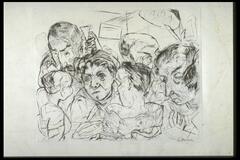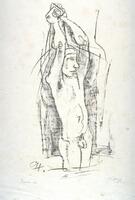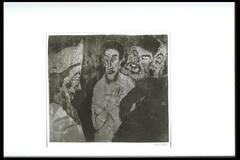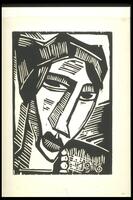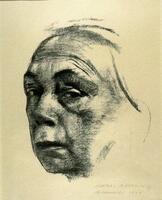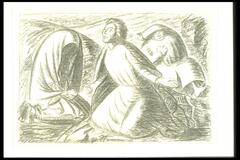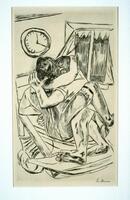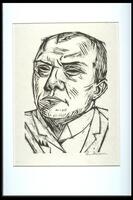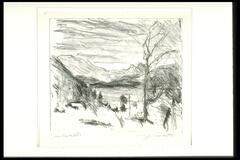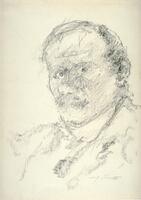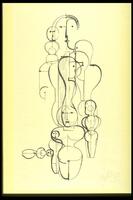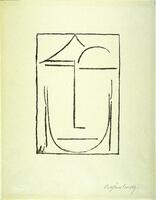Während des Nationalsozialismus in Deutschland hat die „Entartete Kunst” Ausstellung in München 1937 stattgefunden, und dies war die wichtigste Ausstellung, die das deutsche Volk mit dem nationalsozialistischen Konzept der „Entarte Kunst“ vertraut machte, aber es gab auch viele andere Ausstellungen in anderen Staedten vor dieser Ausstellung. Entartet ist ein abfälliges Wort. Mit „entarteter Kunst“ bezeichneten die Nazis Kunst, die ihren Idealen widerspraech. Diese Kunstausstellung sollte zeigen, wie Kunstwerke den Unterschied der “Rassen” zeigen. Die Ausstellung hat Kunst, die in deutschen Museen beschlagnahmt wurde, gezeigt, und die Ausstellung benutzte abfällige Kommentare und ein denunzierendes Ausstellungsdesign, um die Kunstwerke schlecht aussehen zu lassen. Besucher sollten kommen, um ihre Überlegenheit über “entartete Kunst” zu genießen. Aber viele Besucher sind aus Neugier hingegangen, und einige Besucher sind gegangen, um Kunst von ihren Lieblingskünstlern zu sehen. Die meisten Besucher zogen eigentlich die „entartete Kunst“ vor. Die Sammlung hat praktisch alle deutsche moderne Kunst ausgestellt, und sie hat auch Kunst von berühmten Künstlern wie Picasso gezeigt. Meine Sammlung stellt Kunst von Künstlern, die in München gezeigt wurden, und andere Kunst, die als “entartet” betrachtet wurde, zusammen.
14 Items in this Learning Collection
Collection Object
Collection Object
Collection Object
Collection Object
Collection Object
Collection Object
Collection Object
Collection Object
Collection Object
Collection Object
Collection Object
Copyright
All Rights Reserved
()
Head of a Woman (Frauenkopf)
Accession Number
1949/1.175
Title
Head of a Woman (Frauenkopf)
Artist(s)
Karl Schmidt-Rottluff
Object Creation Date
1916
Medium & Support
wood cut on paper
Dimensions
12 in x 9 in (30.48 cm x 22.86 cm);10 ⅛ in x 7 ⅛ in (25.72 cm x 18.1 cm);19 ⅜ in x 14 ⅜ in (49.21 cm x 36.51 cm);12 11/16 in x 9 ⅝ in (32.23 cm x 24.45 cm)
Credit Line
Museum Purchase
Label copy
March 28, 2009
Schmidt-Rottluff, along with three fellow students of architecture, founded the artists’ association Die Brücke (The Bridge) in Dresden, Germany in 1905. This group of artists was in search of a more direct and unmediated (and thus more “authentic”) form of expression than that allowed by the academic style currently being taught in art schools. One could not get any more direct than the crude, simple means of woodcut—prints made from wood blocks with images carved into them by hand with a knife. Die Brücke contributed to the great revival of the woodcut medium at the beginning of the twentieth-century.
Woodcutting had special significance for Schmitt-Rottluff: when the trauma of fighting in World War I left him too shaken to paint, he found that the process of carving into wood was therapeutic and helped to steady his hand and mind. This print, completed during his military service, uses the bold, angular lines inherent in woodcut to great effect. The broad nose, almond-shaped eyes, and full lips evoke the art of Oceania and the Americas, which had a profound influence on Brücke artists.
Subject matter
One from a nunber of woodcut prints from the time that he was convalescing after serving in the First World War. "Head of a Woman" also shows the artist's stylistic interest in the art of non-western cultures, especially their treatment of the human figure.
Physical Description
A monumentally stylized head of a woman. Her head is tilted slighty to the viewer's right. Her eyes, nose, and lips are large and almost mask-like. She appears to be wearing a hat of a modern style. Shading is executed with powerful parallel lines and cross-hatching. The year of the work's execution, 1916, appears in the lower right.
Primary Object Classification
Print
Primary Object Type
portrait
Collection Area
Modern and Contemporary
Rights
If you are interested in using an image for a publication, please visit http://umma.umich.edu/request-image for more information and to fill out the online Image Rights and Reproductions Request Form.
Keywords
Expressionism
Expressionist (style)
heads (animal components)
modern and contemporary art
women (female humans)
woodcuts (prints)
1949/1.175
Title
Head of a Woman (Frauenkopf)
Artist(s)
Karl Schmidt-Rottluff
Object Creation Date
1916
Medium & Support
wood cut on paper
Dimensions
12 in x 9 in (30.48 cm x 22.86 cm);10 ⅛ in x 7 ⅛ in (25.72 cm x 18.1 cm);19 ⅜ in x 14 ⅜ in (49.21 cm x 36.51 cm);12 11/16 in x 9 ⅝ in (32.23 cm x 24.45 cm)
Credit Line
Museum Purchase
Label copy
March 28, 2009
Schmidt-Rottluff, along with three fellow students of architecture, founded the artists’ association Die Brücke (The Bridge) in Dresden, Germany in 1905. This group of artists was in search of a more direct and unmediated (and thus more “authentic”) form of expression than that allowed by the academic style currently being taught in art schools. One could not get any more direct than the crude, simple means of woodcut—prints made from wood blocks with images carved into them by hand with a knife. Die Brücke contributed to the great revival of the woodcut medium at the beginning of the twentieth-century.
Woodcutting had special significance for Schmitt-Rottluff: when the trauma of fighting in World War I left him too shaken to paint, he found that the process of carving into wood was therapeutic and helped to steady his hand and mind. This print, completed during his military service, uses the bold, angular lines inherent in woodcut to great effect. The broad nose, almond-shaped eyes, and full lips evoke the art of Oceania and the Americas, which had a profound influence on Brücke artists.
Subject matter
One from a nunber of woodcut prints from the time that he was convalescing after serving in the First World War. "Head of a Woman" also shows the artist's stylistic interest in the art of non-western cultures, especially their treatment of the human figure.
Physical Description
A monumentally stylized head of a woman. Her head is tilted slighty to the viewer's right. Her eyes, nose, and lips are large and almost mask-like. She appears to be wearing a hat of a modern style. Shading is executed with powerful parallel lines and cross-hatching. The year of the work's execution, 1916, appears in the lower right.
Primary Object Classification
Primary Object Type
portrait
Collection Area
Modern and Contemporary
Rights
If you are interested in using an image for a publication, please visit http://umma.umich.edu/request-image for more information and to fill out the online Image Rights and Reproductions Request Form.
Keywords
Expressionism
Expressionist (style)
heads (animal components)
modern and contemporary art
women (female humans)
woodcuts (prints)
